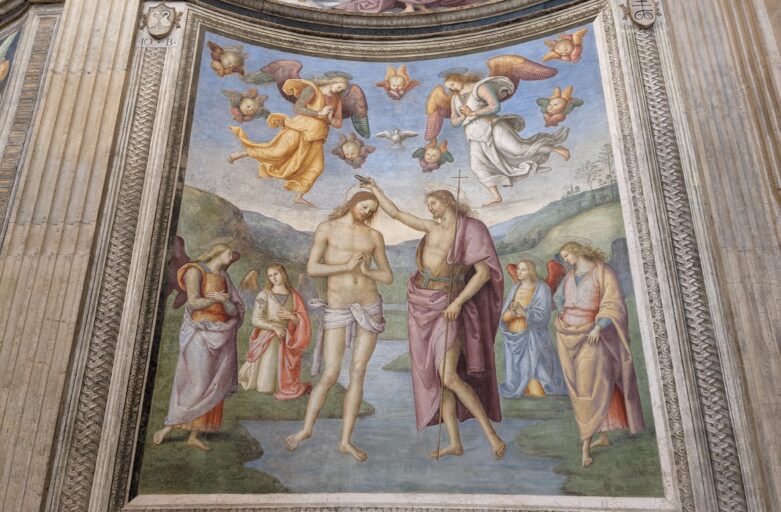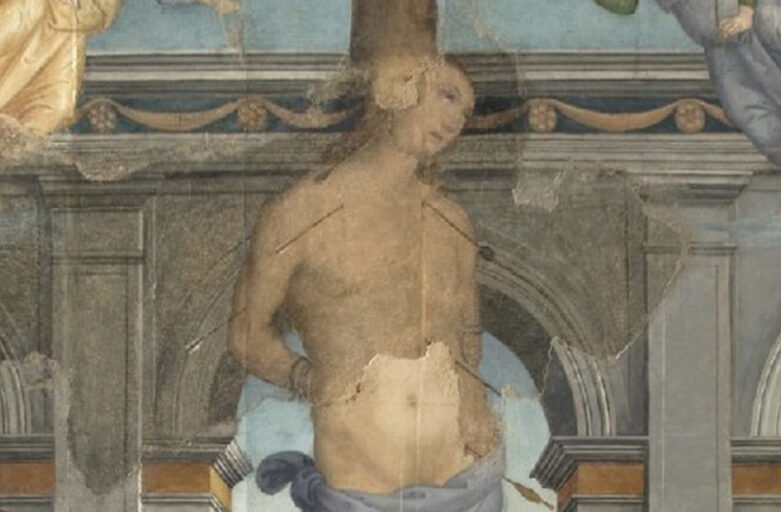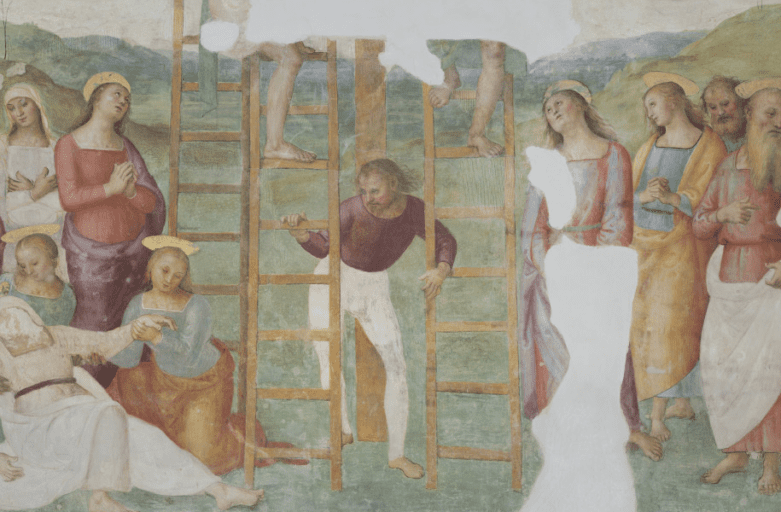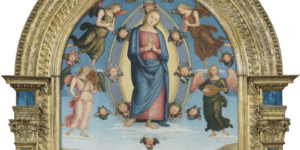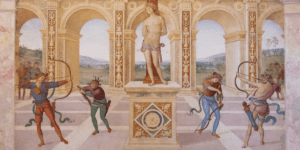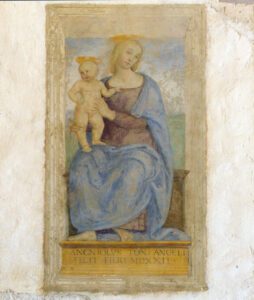“Saint Sebastian between the Saints Roch and Peter” in the Church of the Assumption of Mary, Cerqueto
In 1478 Perugino frescoed the Chapel of Mary Magdalene in the Church of the Assumption of Mary in Cerqueto, a small town near Marsciano (Perugia territory). The chapel had been built in order to implore God during a plague; that justifies the presence of the Sebastian and Roch, both being patron saints against epidemics. Unfortunately, the fresco has gone lost for the most part; but what remains lets us understand that there was a vaster and more complex pictorial cycle.
Here in Cerqueto, Perugino depicted Saint Sebastian for the first time in his career. Many more occasions would follow, still extant: for example, a fresco in Panicale and a tempera on panel in Perugia, Church of San Francesco al Prato (Saint Francis, by a Meadow), not to mention the two wonderful paintings now in the Louvre Museum in Paris, France, and Ermitage in Saint Petersburg, Russia.
Depicting the Saint’s martyrdom also allowed artists to test themselves with the male nude, rendering anatomy and motion in space as best as they could.
Strong points: the rendering of anatomy and perspective
Saint Sebastian is tied to a pillar by means of a thin rope; three arrows transfix his body. His feet, that look so natural and are perfectly rendered in perspective, stick out beyond the edge of a sort of podium. On both of his sides two other figures appear, possibly Saint Roch (on the left) and Saint Peter (right).
In this early work, carried out by Perugino when he was 28 years old or so, the stylistic influence of Verrocchio and Pollaiolo can still be made out.
It is worth remembering that, only a couple of years later, Pietro Vannucci would be called by Pope Sixtus IV to Rome in order to paint a set of episodes from the Old and New Testaments on the walls of the Sistine Chapel. This assignment marked the success of the Umbrian painter.
The troubled destiny of a fresco
The pictorial cycle was heavily damaged in approximately 1779, that is the same period in which the Chapel of Mary Magdalene was demolished for the renewal of the Church of the Assumption. The church was in fact completely rebuilt in the years 1751-80.
The Saint Sebastian fresco was spared, though, and after having been removed from the left nave, it was set in another chapel. But, during the transport, the images of Saint Mary Magdalene (in the lower part of the fresco) and the Holy Trinity encircled by angels (in the upper part) were irremediably spoiled and therefore lost. So, what we can currently admire is only a fragment of the original painting.
When the fresco was transferred, they also rewrote the inscription below it: PETRUS PERUSINUS P(inxit), “Pietro Perugino painted it,” together with the year in which it had been done, in Roman numerals.
Discover Perugino's testimonials today
Paths and itineraries to discover the works of the divine painter

